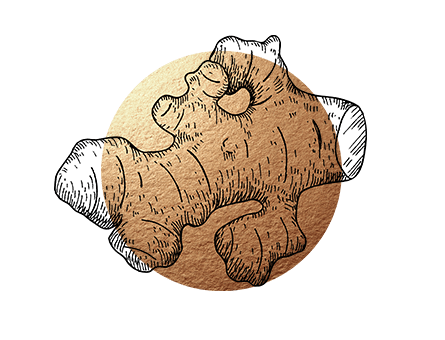INDONESIAN CUISINE
Indonesia consists of over 17’500 islands, spread out over a distance of 5’000 kilometers from east to west and over 3 different times zones. It’s the biggest archipelagic state of the world and holds the fourth largest population with over 255 mio. inhabitants. Its capital Jakarta lies on the island of Java and is home to over 9,6 Mio. people.
Indonesia covers various different cultures – over 350 different ethnic tribes are known to be found among the islands of Indonesia. Among these dietary habits differentiate slightly, but the base for all Indonesian meals is everywhere the same: Rice is the main component of every dish and also spices are fundamental components to the traditional cooking.
Since the common era spices have been exported, first to India and China, then through the arabs. In the middle age Europe discovered the diversity of Indonesian spices. Nutmeg and clove from the Molucca Islands once were more precious than gold.
In the early years of the 16th century Spain and Portugal relocated on the islands, and after 1600 until before World War II Indonesia was a dutch colony. Every one of these cultures left their culinary footprint in todays Indonesian cuisine.
The Indonesian way to prepare and cook a meal is quite elaborate: a dazzling array of spices and ingredients! The cooking normally starts with frying the bumbu halus, a blend of mixed spices. Five to 15 ingredients are being prepared in a mortar until they form a paste. At Dapur we herefor only utilize fresh ingredients. Once the fried paste starts to release a mouth-watering scent we add the remaining ingredients. Most of the Indonesian dishes need to cook over 20 minutes, some of the stews even need to cook for several hours.
Well, every dish has its own complexity – in terms of cooking but also in terms of taste. Let us know how you experienced it!
PLANTBASED
A plantbased diet implies a full preparation of food and dishes only by using plants: no dairy, no meat, no fish. Non of our dishes include animal based components like butter, eggs or milk. Nature provides so many essential nutrients and alternatives – so we can actually waive all animal products and still have a very balanced diet. We are conviced that the vegan cuisine is not only tasty but also very meaning- and mindful.
A vegan lifestyle implies more than just a vegan diet. Vegans not only renounce to eat animal products, they also avoid products of animal use and animal products in general. This means the ethical motivation behind living a vegan life implies not to wear any clothing or use any textile that has been partly produced by using animal resources or by animal experiments.
There are plenty of reasons why to follow a plantbased diet – be it for your personal health, for the anmial welfare, for fighting world hunger, for the enviroment, or just simply for its good taste.
SOME OF OUR PLANTBASED INGREDIENTS
JACKFRUIT
Jackfruit (Nanka) is ovally shaped with a diameter of 50cm and it grows on trees. Some of these fruits can weigh up to 40kg. The unripe jackfruit has a thick and spiny green skin, which turns yellow when ripening. Jackfruit can even be eaten unripe as a vegetable, raw or cooked. The consistency of unripe jackfruit resembles strongly the consistency of chicken meat. That’s what makes jackfruit a great vegan alternative to chicken. We introduce jackfruit in many of our main courses.

KAFFIR LIME
The kaffir lime tree grows well in the south east asian climate. In Thailand and Indonesia these leaves belong to the basic formula of many dishes such as curries and soups. Coconut milk is the kaffir limes best friend and together they develop a unique flavour. The kaffir lime leaves have a firm and of wax-like surface and unfold a fresh and lemony flavour once there surface is gridded. In most recipes these leaves are cut in thin pieces and are added to create a fruity taste.

TEMPEH
Tempeh is a traditional soy fermentation product of Indonesia. It is made by a natural culturing and controlled fermentation process that binds soy beans into a patty. A special fungus is used to promote this process. Tempeh has a mild and nutty flavour and is considered as a rich source in protein.

TOFU
Tofu is made by curdling soy milk, originated from soy beans, and then by pressing the resulting curds into soft, white blocks. This process is similar to the one known from cheesemaking from cow milk.
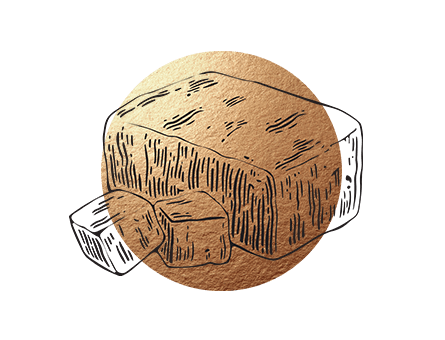
SEITAN
Seitan, also known as wheat gluten, was invented by the Chinese over 1500 years ago. It is produced from wheat or spelt, where water helps to extract the stark. What remains is the wheat protein, also known as wheat gluten. It’s consistency is solid and resembling that of meat.

- Kurkuma | Kunyit
- Candlenut | Kemiri
- Lemon Basil | Kemangi
- Salam leaves | Daun Salam
- Galanga | Lengkuas
KURKUMA
Kurkuma, also known as turmeric, is used in various Indonesian recipes. It yields a lucent yellow color and is favourably used in many curries (curry = gule). Commonly the root of the plant is used for cooking. In the Indonesian kitchen we also use the leafs.
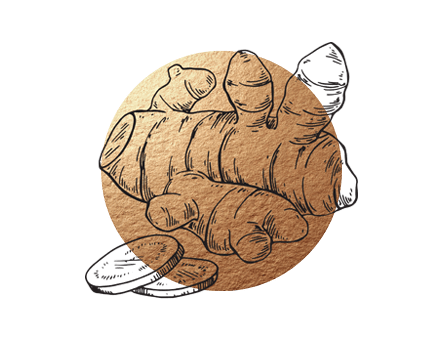
CANDLENUT
Candlenut, also called Kemirinut, is a nut similar to the macadamia nut. The candlenut has a creamy color and is nutty and slightly oily in its taste. They are usually used to complement a dish in its aroma. The candlenut must be cooked before eating, as raw consumption is considered poisonous. Roasted candlenuts are most aromatic.

LEMON BASIL
This basil specie adds to every dish a special citric taste that unfolds best when the leaves are added just before serving.
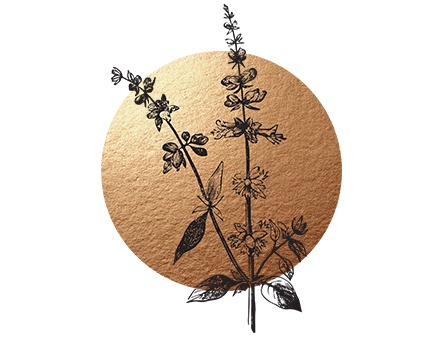
SALAM LEAVES
These leaves add a smooth, slightly herbal taste to every meal. Most effectively this taste unfolds when frying the leaves in oil to start. Even if these leaves resemble the european bay leaf they taste very differently. Salam leaves are exclusively used in indonesian cooking
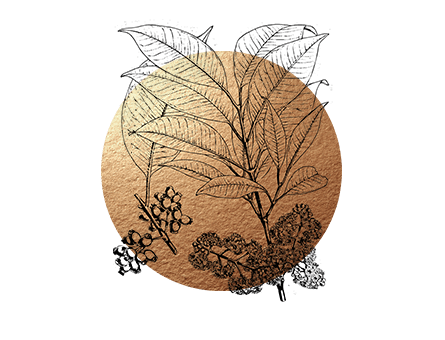
GALANGA
Galanga is a rootstock, like ginger, but very smooth in taste, with dark brown paring and creamy white flesh.
